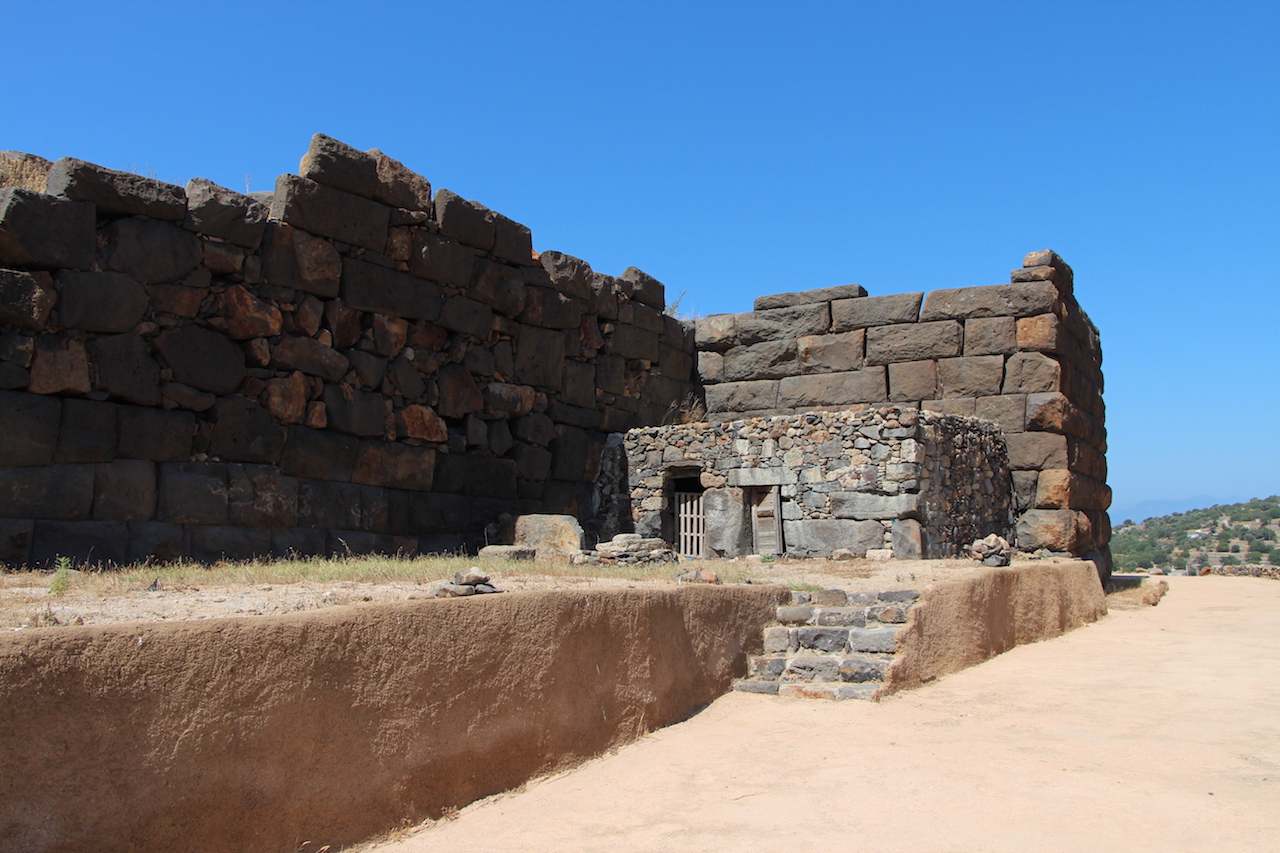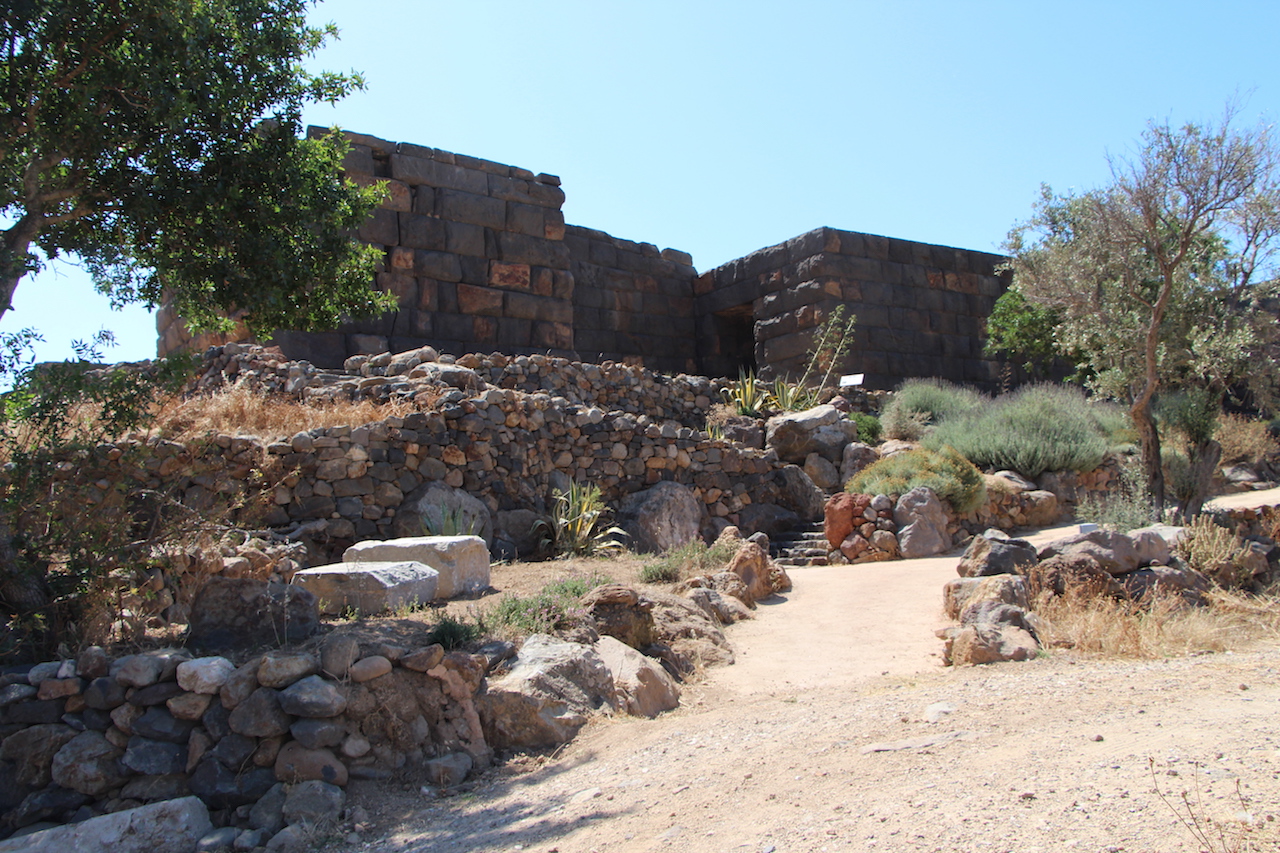Paleokastro is the classical and Hellenistic Acropolis of the island of Nisyros that was built from the 6th to the 4th century BC and is situated on the hill overlooking the village of Mandraki. It is one of the best preserved of its kind in the world. The huge black volcanic slabs of rock interlock to form the walls. In some cases their width reaches 3.5 meters and they weigh some 3 to 4 tons. Six towers are still standing on the South side along with a wall 230 meters long while on the East side there are two towers and 80 meters of wall. There are defense systems, observatories and towers all over the island and communication with the Castle was maintained through smoke signals during the day and fire signals during the night.
The Paleokastro walls protected and encircled the city within, which has not yet been excavated. The massive stairs of 15 and 18 steps respectively that can be found near the entrance, lead to the walkways on top of the walls that culminated at a height of 7.5 meters and have been preserved in excellent condition. A number of stairs were found along the wall further away from the entrance but are not as well preserved, while on the South wall some extensive restoration took place in Hellenistic times to a tower and a flight of stairs. The only surviving gate (2.10 meters wide and 3.20 meters high) can be found in a recess facing a tower from where the defendants could easily fire against their attackers.
Extensive restoration of towers and walls has taken place more recently. After a careful study of the blocs found in the area a number of them were reinserted in their original position.




















